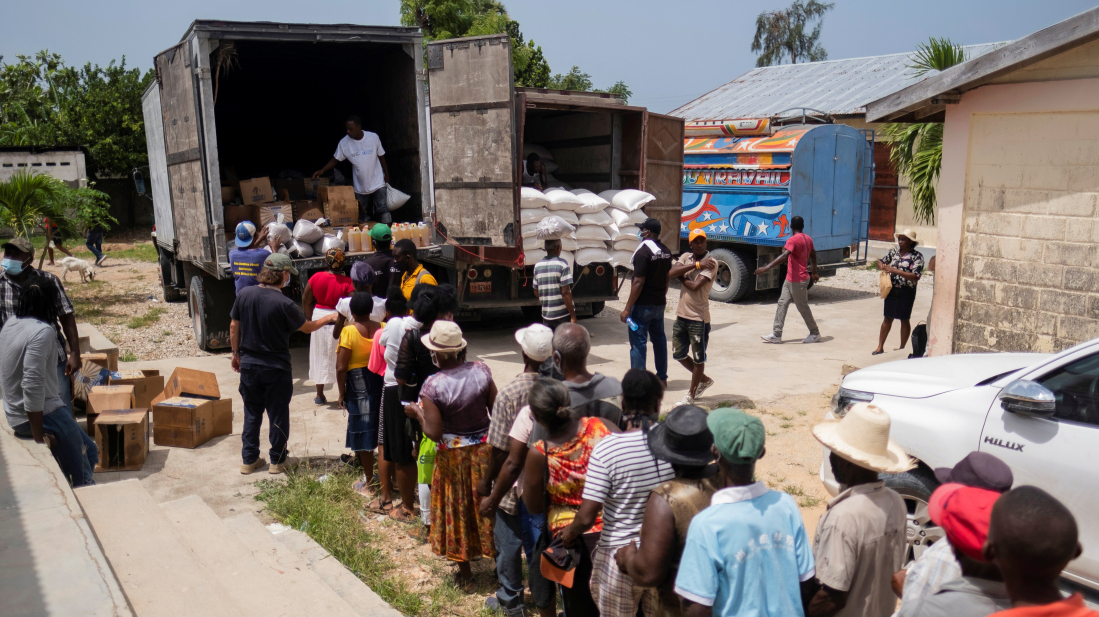One year after AZAL plane crash near Aktau, investigation continues
It’s been a year since an Azerbaijan Airlines plane crashed near Aktau, Kazakhstan, killing 38 people. Relatives and loved ones mourn the victims, a...

Haiti's food insecurity is projected to worsen by mid-2026, with nearly 6 million people facing critical hunger levels. Gang violence and economic collapse have displaced families, disrupted agriculture, and eroded livelihoods, leaving over half the population reliant on aid.
Currently, over half the population, approximately 5.7 million individuals, are experiencing high levels of food insecurity, including 1.9 million at emergency levels marked by acute shortages and severe malnutrition.
The Integrated Food Security Phase Classification (IPC), a UN-backed index measuring hunger and malnutrition in global hotspots, attributes this worsening situation to six consecutive years of economic recession and escalating gang violence.
In areas controlled by armed groups, farmers face extortion, and small businesses are forced to shut down. The absence of the IPC's most extreme phase of famine is seen as "encouraging," but experts warn that progress is fragile and unsustainable without long-term investment to tackle the root causes of food insecurity.
Haiti remains among the five worst food-security crises globally, with more than half of its population relying on assistance.
Thailand and Cambodia both reported fresh clashes on Wednesday, as the two sides prepared to hold military talks aimed at easing tensions along their shared border.
Libya’s chief of staff, Mohammed Ali Ahmed Al-Haddad, has died in a plane crash shortly after departing Türkiye’s capital, Ankara, the prime minister of Libya’s UN-recognised government has said.
A majority of Russians expect the war in Ukraine to end in 2026, state pollster VTsIOM said on Wednesday, in a sign that the Kremlin could be testing public reaction to a possible peace settlement as diplomatic efforts to end the conflict intensify.
Afghanistan and Iran have signed an implementation plan to strengthen regulation of food, medicine, and health products based on a 2023 cooperation agreement.
Military representatives from Cambodia and Thailand met in Chanthaburi province on Wednesday ahead of formal ceasefire talks at the 3rd special GBC meeting scheduled for 27th December.
North Korean leader Kim Jong Un oversaw the test-firing on Wednesday of a long-range surface-to-air missile at a launch site near its east coast, state media KCNA reported on Thursday.
Countries including Britain, Canada, Germany and others on Wednesday condemned the Israeli security cabinet's approval of 19 new settlements in the occupied West Bank, saying they violated international law and risked fuelling instability.
A majority of Russians expect the war in Ukraine to end in 2026, state pollster VTsIOM said on Wednesday, in a sign that the Kremlin could be testing public reaction to a possible peace settlement as diplomatic efforts to end the conflict intensify.
The White House has instructed U.S. military forces to concentrate largely on enforcing a “quarantine” on Venezuelan oil exports for at least the next two months, a U.S. official told Reuters, signalling that Washington is prioritising economic pressure over direct military action against Caracas.
Military representatives from Cambodia and Thailand met in Chanthaburi province on Wednesday ahead of formal ceasefire talks at the 3rd special GBC meeting scheduled for 27th December.
You can download the AnewZ application from Play Store and the App Store.

What is your opinion on this topic?
Leave the first comment